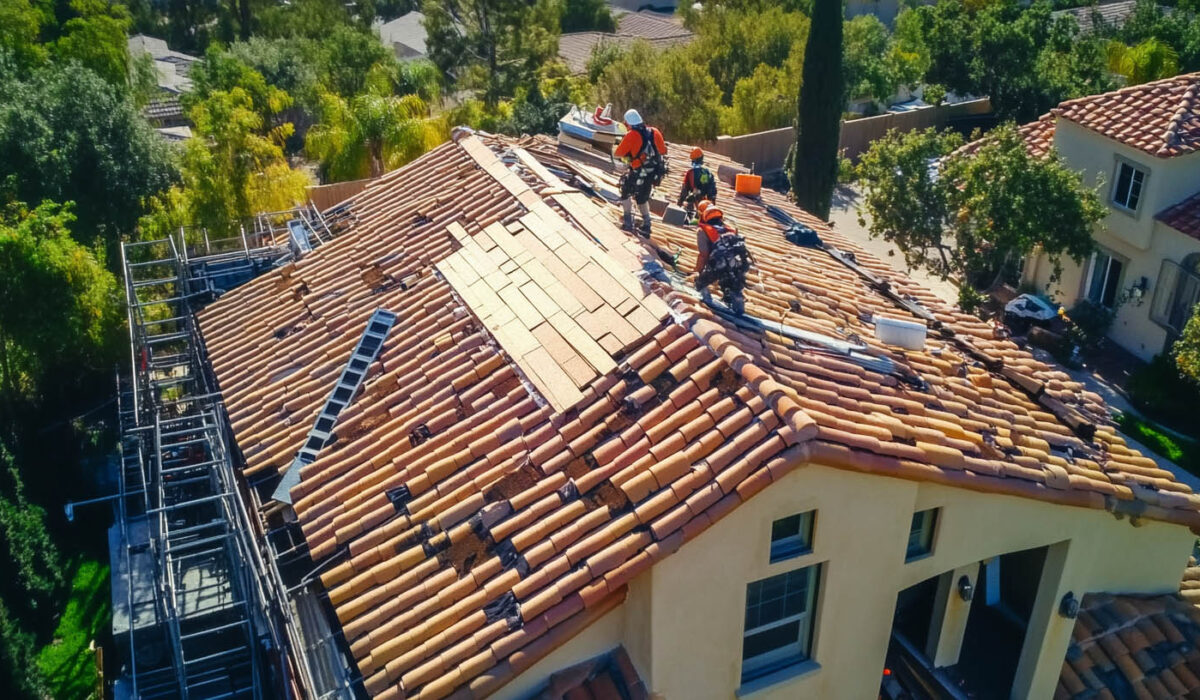Beneath the surface of every great tile roof lies a component that often goes unnoticed but is absolutely critical: the underlayment. While the tiles provide the first line of defense against the elements, it is the underlayment that protects the structure from moisture, wind, and long-term damage. Understanding the role and importance of underlayment in tile roof installations can help homeowners make informed decisions that impact the longevity and performance of their roof.
For homeowners in San Diego, CA, Indiana Metal Roofing Systems offers expert insight into roofing systems designed for maximum protection. Though known for their metal solutions, their approach to high-performance roofing applies equally to tile installations.
What Is Roof Underlayment?
Underlayment is a protective layer installed directly onto the roof deck and beneath the tile system. It acts as a secondary weather barrier, preventing water intrusion if tiles are damaged or displaced. Given that tile is not fully waterproof, this layer is essential for guarding against leaks and structural decay.
Several types of underlayment are used in tile roofing:
- Asphalt-saturated felt: A traditional option, effective but less durable in extreme climates.
- Synthetic underlayment: Lightweight and tear-resistant, with superior resistance to moisture.
- Self-adhering membranes: Provide high water resistance and are especially good in valleys or low-slope sections.
Why Underlayment Matters in Tile Roofs
Tile roofs are long-lasting, but the tiles themselves are often porous and can allow small amounts of moisture through. Over time, water, wind-driven rain, and condensation can seep past even well-installed tiles. That’s where a quality underlayment proves invaluable.
It ensures:
- Moisture protection for roof decking and attic spaces
- Increased wind resistance and secondary defense during storms
- Extended roof life by protecting vulnerable structural components
Failing to invest in a quality underlayment can result in mold, rot, and even interior leaks, especially during the rainy season.
Climate Considerations in San Diego
San Diego’s unique coastal climate presents specific challenges. While freezing temperatures are rare, roofs must contend with UV exposure, salt air, and occasional heavy rain. An underlayment with high heat resistance and strong waterproofing capabilities is ideal.
For example, synthetic underlayments with UV-stable surfaces hold up well during the extended exposure that can happen during tile installation or maintenance. In marine-influenced areas, corrosion-resistant materials and sealants are also essential.
Installation Best Practices
Even the best underlayment won’t perform if it’s installed incorrectly. That’s why working with trained professionals is crucial. Key elements of proper installation include:
- Overlapping seams to prevent water infiltration
- Installing from the bottom up for proper water shedding
- Flashing integration around valleys, chimneys, and vents
- Securing edges to prevent wind uplift
Contractors also assess the pitch of the roof. Steeper slopes shed water more efficiently, while low-slope areas may require additional waterproofing or upgraded underlayment materials.
Maintenance and Inspection
Since underlayment is hidden beneath the tiles, regular roof inspections are essential. Look out for cracked or dislodged tiles, especially after storms or high winds, as these could expose the underlayment to direct elements.
If your roof is over 20 years old, consider an inspection to determine the condition of the underlayment. In many cases, replacing the underlayment while reusing tiles is a cost-effective way to extend the roof’s life.
Warranty Considerations
The lifespan of your underlayment can range from 20 to 50 years, depending on the material and environmental factors. Reputable manufacturers and contractors often offer warranties, but these may require routine maintenance and certified installation to remain valid.
As an Owens Corning Preferred Contractor, Indiana Metal Roofing Systems works with high-quality materials backed by industry-leading warranties, ensuring homeowners receive long-term value and peace of mind.
Is It Time to Replace Your Underlayment?
If you’re seeing signs of water damage, leaks, or deteriorating roof performance—even if the tiles look intact—it may be time to investigate the condition of the underlayment. This component is your home’s silent defender, and overlooking its condition can lead to far-reaching consequences.
Read also our blog: Complete Homeowner’s Guide to Tile Roofing Systems
When it comes to safeguarding your investment, the right underlayment is just as important as the tiles you see on the surface. Choose high-quality materials, work with experienced professionals, and ensure your tile roof is ready to defend your home from the elements for decades to come.

